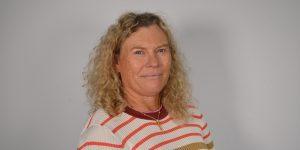1:30min
 As an optometrist working in the regional town of Yeppoon, located 40 minutes from Rockhampton, Queensland, Fiona Moore understands first-hand the frustrations of being unable to prescribe oral medications to her patients.
As an optometrist working in the regional town of Yeppoon, located 40 minutes from Rockhampton, Queensland, Fiona Moore understands first-hand the frustrations of being unable to prescribe oral medications to her patients.
‘I’m in a scenario where I’m not allowed to provide the full amount of care that is within my scope of practice. It’s quite frustrating, and it’s becoming harder for us as optometrists to do the right thing by our patients without having access to oral prescribing.’
Fiona served as Deputy President on the Optometry Australia board from 2021-22. She, along with her husband Tom, are the owners of Moore Eyes, based in Rockhampton with a sister practice in Yeppoon, both in central Queensland. Given the overwhelming demand placed on the nearest ophthalmology service in Rockhampton, Fiona says optometrists must be allowed to help bridge the gap and provide much-needed support to an overwhelmed healthcare sector.
OA: Do you think optometrists should be allowed to prescribe oral medications in Australia?
Fiona: I certainly do. I practice regionally in Yeppoon, which is a town 40 minutes from Rockhampton. We’re in a situation right now where we have scant access to ophthalmology tertiary care, and we have a limited supply of general practitioners.
At the moment, I have practitioners who are sending me patients to diagnose and treat topically. However, in the case where a patient requires something orally, I have to send them back to that practitioner so that they can prescribe the medication. I’m in a scenario where the practitioner values my opinion, but I’m not allowed to provide the full amount of care that is within my scope of practice. It’s quite frustrating, and it’s becoming harder for us as optometrists to do the right thing by our patients without having access to oral prescribing.
OA: How has this restriction impacted you, your practice and your patients?
Fiona: I have a classic example of how this has impacted a patient of mine. There was a 16-year-old who had initially presented to the emergency department. The ED had to call the children’s hospital in Brisbane, which was seven hours away, and there’s no telehealth between those two facilities, so this process was all done over the phone. The patient was then told to come see me to clarify the diagnosis. Unfortunately, the child had been diagnosed incorrectly; he had preseptal cellulitis, which is something that we can treat. I then had to send that child back to the ED so they could prescribe him the correct medication. If that child hadn’t gone back to the ED, or hadn’t come to see me, there’s a lot of complications that could have occurred there – not to mention there’s a lot of cost involved in having to go to-and-fro between us.
I had another patient who presented with herpes simplex keratitis, and she’d had it for three weeks before she came to see me. She’d been to the ED, and they weren’t sure what they were looking at, which is how she ended up with me. In this type of case, we can treat topically with the drugs we can provide, but access to the topical medicine wasn’t available due to a supply shortage, and she required the tablet form of the medicine. This person also may have benefitted from oral use of this medicine to avoid re-occurrence, which would put her vision at further risk.
Allowing us to prescribe oral medications would just streamline things for our patients – it’s not for my satisfaction, it’s for the benefit of our patients.
OA: What other benefits do you see coming from optometrists being able to prescribe oral medications?
Fiona: There are pharmacists, GPs and EDs all sending patients to us as it is. If we can eliminate that go-between, then it’s going to save everybody time and money. We have a symbiotic relationship with GPs; while we care for the eyes, we can’t prescribe the necessary drugs. GPs trust us and our diagnosis, so it’d be better if we could look after our patients from the initial diagnosis to ongoing treatment and management, and remove that barrier that’s preventing us from providing complete care. Furthermore, it’s also a cost-effective solution. Patients will get treated in place – they’re already sitting down in the chair with us, and they don’t want to have to go to a second practitioner.
The closest ophthalmologist to me is in Rockhampton, but he’s obviously very busy, so we ideally only want to send him patients that require his services. We know what cases require ophthalmology services, so it really falls on our shoulders as optometrists to upskill and provide the treatment that falls within our scope of practice. We are already helping out as much as we can within this system, and it would only be helped further by being able to orally prescribe.
OA: How do you see the role of optometry evolving if Australia were to allow optometrists to prescribe oral medications?
Fiona: I think we are already becoming the go-to people for eyes and eye conditions. We are definitely the keeper of glasses and the prescriber of lenses and contact lenses, and that will always be a primary job for us. But we can also look after the complete health of the eye as well. It’s about providing full treatment and complete care, and once we achieve that, we can essentially function as the GPs of the eyes.
Tagged as: Advocacy & government, Oral prescribing, Patient management, Scope of practice